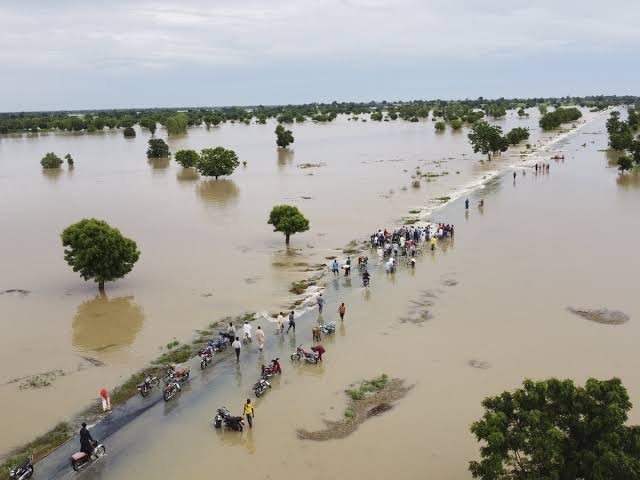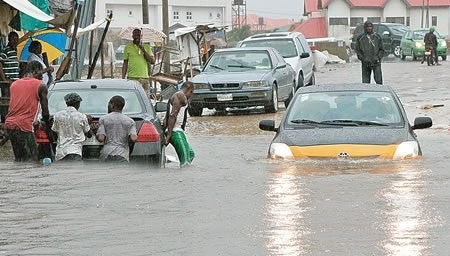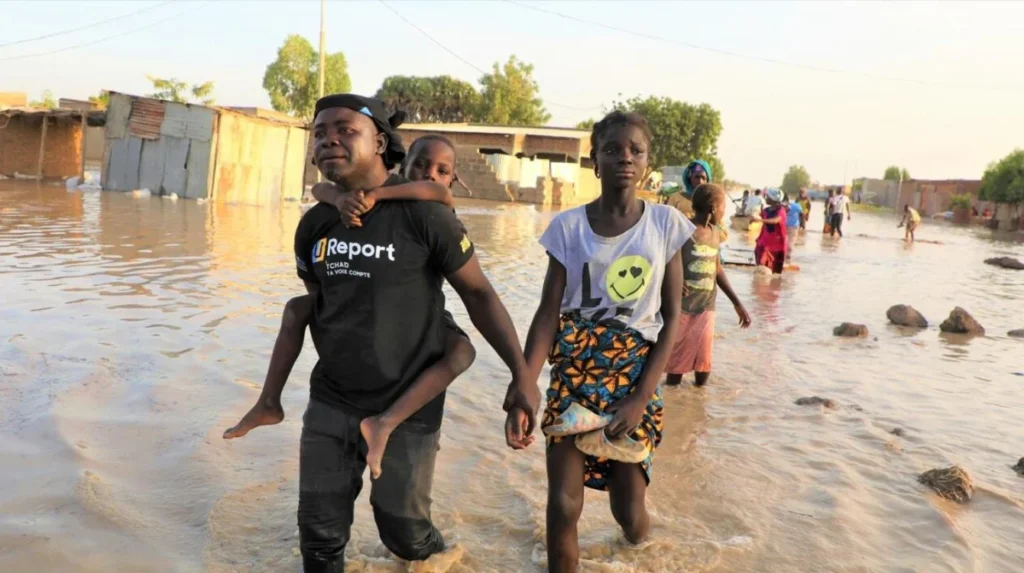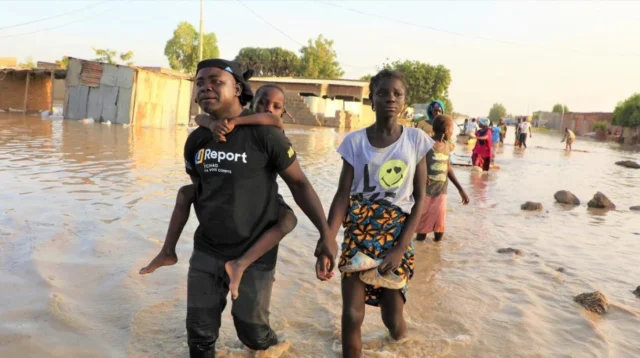When the Federal Government issued an urgent flood alert in early August 2025, warning residents in 15 states to brace for days of heavy rainfall, many Nigerians received the announcement with fear rather than preparedness. For families who had barely recovered from the devastating Mokwa flood earlier this year, the warning was another reminder of the country’s fragile relationship with nature—and the glaring gaps between climate legislation, practical action, and the use of modern technology in tackling disasters.
Climate technology enthusiast and environmental advocate, Omabuwa Mene-Ejegi, did not mince words when he addressed the press shortly after the government’s announcement. In his communique, he highlighted what he described as the “systemic failure to connect legislation with implementation” and a worrying absence of technological innovation that could save lives and property. According to him, Nigeria’s response to floods, erosion, and other environmental disasters remains largely reactive, instead of preventive.
Table of Contents

Why Floods Keep Devastating Nigeria
Flooding is not new to Nigeria. From the Niger Delta to the floodplains of the North, communities have battled rising waters for decades. But 2025 has already gone down as one of the most disastrous years in the nation’s history. According to records, Nigeria witnessed its worst flooding in 60 years this year, with the Niger River overflowing its banks and submerging vast parts of the North. Over 150 people lost their lives, and thousands of families were displaced, their farmlands washed away in hours.
The most painful memory, however, remains the Mokwa flood in May 2025, which claimed about 500 lives, left more than 600 people missing, and destroyed roads, bridges, and 4,000 homes. Survivors are still piecing their lives together, many of them reliant on emergency relief and struggling to rebuild farms that once fed entire communities.
Beyond these high-profile tragedies, Nigeria faces another slow-burning disaster: gully erosion, particularly in the Southeast. Intense rainfall combined with years of deforestation has ripped open massive gullies that swallow farmlands, homes, and critical infrastructure. It is not only an ecological problem but also an economic one, pushing thousands of smallholder farmers further into poverty.
Mene-Ejegi argued that while climate-driven changes in rainfall patterns, poor dam management, and rapid land-use changes fuel these disasters, what amplifies their destructive force is the lack of proactive planning and innovation. “We have a Climate Change Act, a Climate Change Fund, and even a national action plan,” he said. “Yet, events like Mokwa show the gap between legislation and action. Frameworks exist, but implementation and adaptation measures are insufficient.”
The Missing Link: Technology and Innovation
Around the world, technology has become a frontline defence against climate disasters. Countries with similar challenges to Nigeria have invested heavily in artificial intelligence (AI), data-driven early warning systems, and smart water management technologies to predict, prepare for, and mitigate floods.
Nigeria, however, continues to lag behind. Mene-Ejegi emphasised that AI could have been a game-changer in the Mokwa disaster. With predictive algorithms and real-time data collection, government agencies could have issued more accurate warnings, optimised dam releases, and helped residents evacuate before the waters arrived.

Evidence of what works is not far-fetched. Between 2024 and 2025, the International Rescue Committee and Give Directly piloted an AI-powered flood-forecasting system in Kogi and Adamawa States. This system not only predicted flood events but also triggered cash transfers directly to vulnerable households days before flooding occurred. Families used the funds to relocate, safeguard property, and buy essential supplies—reducing the scale of suffering that would otherwise have followed.
Platforms like Esri’s Africa Geoportal and the Geohazard Risk Mapping Initiative are already enabling young volunteers and civil society groups to build real-time flood maps, mobile reporting tools, and interactive dashboards. These community-driven tools show how far grassroots innovation can go, but scaling them nationwide requires government investment and policy support.
“The truth,” Mene-Ejegi stressed, “is that without marrying our climate laws with practical technology-driven solutions, we will keep recycling the same headlines every year: deaths, displacement, and destruction.”
Bridging the Gap Between Legislation and Action
Nigeria is not without ambition. In fact, on paper, the country appears committed to tackling climate change. The Climate Change Act of 2021 established a national council, a dedicated fund, and a framework for action. Successive governments have pledged billions towards environmental protection, and disaster relief is a regular budget line.
Yet, the results on the ground tell a different story. Flood-prone communities remain without flood-control infrastructure such as embankments, levees, or effective drainage. Dam releases remain poorly managed. Reforestation programmes often exist only in policy documents, while indiscriminate tree-cutting continues. Climate education campaigns rarely reach rural communities—the same places most vulnerable to disasters.
Mene-Ejegi’s recommendations offer a practical roadmap. He called for:
- Expansion of AI-enabled early warning systems to all 36 states.
- Large-scale reforestation programmes to combat erosion and restore ecosystems.
- Massive investment in flood-control infrastructure, from urban drainage networks to rural embankments.
- Public climate education, ensuring that vulnerable communities understand and prepare for risks.
- Strict enforcement of environmental regulations under the Climate Change Act.
He added that technology alone will not save Nigeria without human capacity development. Training local engineers, environmental scientists, and data specialists is crucial to sustaining innovation. Communities also need to be empowered to play an active role, rather than waiting for top-down interventions.

A Future at a Crossroads
As climate change accelerates, Nigeria stands at a critical juncture. The science is clear: floods will become more frequent and more intense. The question is whether the country will continue to lurch from one disaster to another or embrace a new model built on technology, foresight, and genuine political will.
The stories of survivors from Mokwa and the Niger River floods remind us that these are not abstract statistics. They are farmers who lost their harvest, children who can no longer attend school, families forced to migrate from ancestral lands. Each disaster erodes not only the soil beneath communities but also the trust in the government’s ability to protect its people.
Nigeria has the knowledge, the legal frameworks, and the young innovators eager to contribute. What remains is the courage to act—boldly, consistently, and with the urgency the climate crisis demands. If the government and stakeholders take up Mene-Ejegi’s call for a technology-driven approach, the country may yet turn the tide. But if not, the warnings will keep coming, and the floods will keep rising.
Join Our Social Media Channels:
WhatsApp: NaijaEyes
Facebook: NaijaEyes
Twitter: NaijaEyes
Instagram: NaijaEyes
TikTok: NaijaEyes





